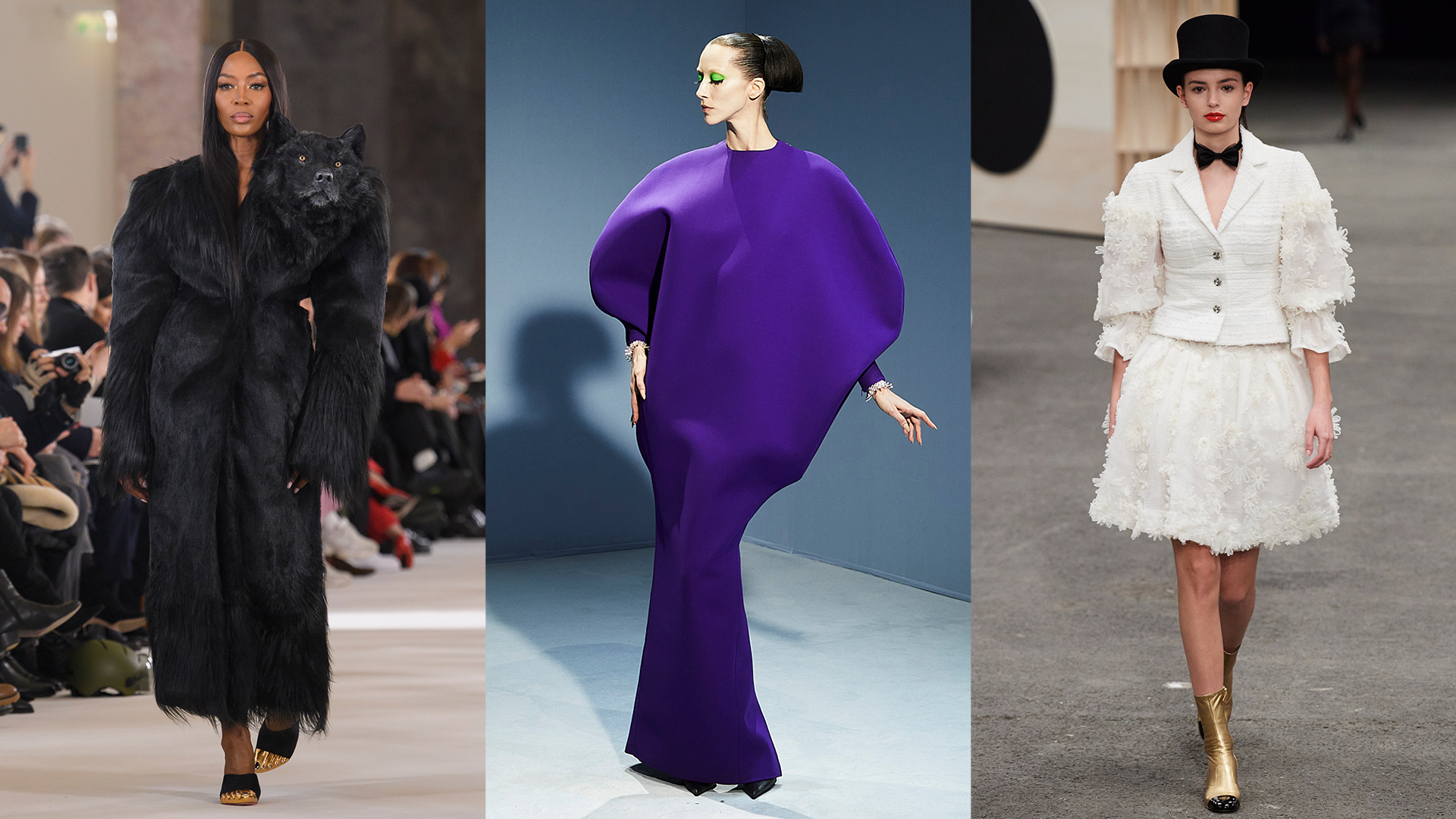What is the purpose of couture? Though technically it serves as fashion’s crème-de-la-crème — handcrafted clothes for the 0.001% and red carpet starlets — couture is facing somewhat of a conundrum. On the one hand, haute couture (which literally translates to “high sewing” in French) is the sacred zenith of the sartorial sphere, sitting atop the golden pyramid that you may remember Miranda Priestley eloquently explaining in The Devil Wears Prada. It’s what John Galliano always described as the “parfum” of a fashion house: its purest form, as opposed to a diluted eau de toilette. It doesn’t need handbags or logos to offer accessible entry points of purchase. It is raw fashion, unbridled by the constraints of commercial branding, sales targets or, in most cases at least, customers’ budgets.
However, as the couture shows in Paris this season ostensibly became larger — with more fanfare, more celebrities, and more screaming crowds outside (blame or thank the K-pop stars) — it raised an interesting question. At a time of environmental catastrophe and widespread demand for more inclusivity in fashion, as well as the worst recession in history headed our way — what purpose is served by extravagant displays of clothes for the world’s wealthiest high-net-worth individuals?
Subscribe to i-D NEWSFLASH. A weekly newsletter delivered to your inbox on Fridays.
Well, couture is arguably about showmanship; ultimately, it is a spectator sport. It is where designers put their best foot forward with exuberant displays of what the best ateliers in the world and their petites mains can create with ample time. It is fashion for the sake of creativity and craftsmanship. More importantly, though, it is where houses can experiment with meticulous techniques that would otherwise cost too much to mass produce. Think of it as watching Formula 1, compared to shopping for a secondhand Volvo. Yes, these are clothes for customers who have no budget when it comes to shopping — but they’re also laboratories for developing new ways of stitching, embroidery, and creating materials. Often, not everything is as it seems. For that very reason, couture deserves to be made full screen and zoomed in on. An embroidered Dior jacket, for instance, may look like it’s cut from straightforward lace, but is in fact the result of hand-piped satin tubes woven into a lattice that is held together by minuscule crochet webs and then fastened by spiralling rouleau frogging.
Clothes entirely made by hand by well-paid, highly skilled craftspeople and shown just twice a year may sound old-fashioned, but it’s a very modern idea — an antidote to the breakneck snowballing speed of the industry and its megawatt productions. You could even call it a solution. Oh, and as you probably know by now if you’ve even so much as glimpsed at your For You Page in the past week, couture still has the ability to provoke — whipping social media into a frenzy over deeply philosophical arguments about hyper-realism, artistic representation and … Kylie Jenner wearing a giant lion’s head replica. It’s a jungle out there! Here’s everything you need to know about this season’s couture shows.
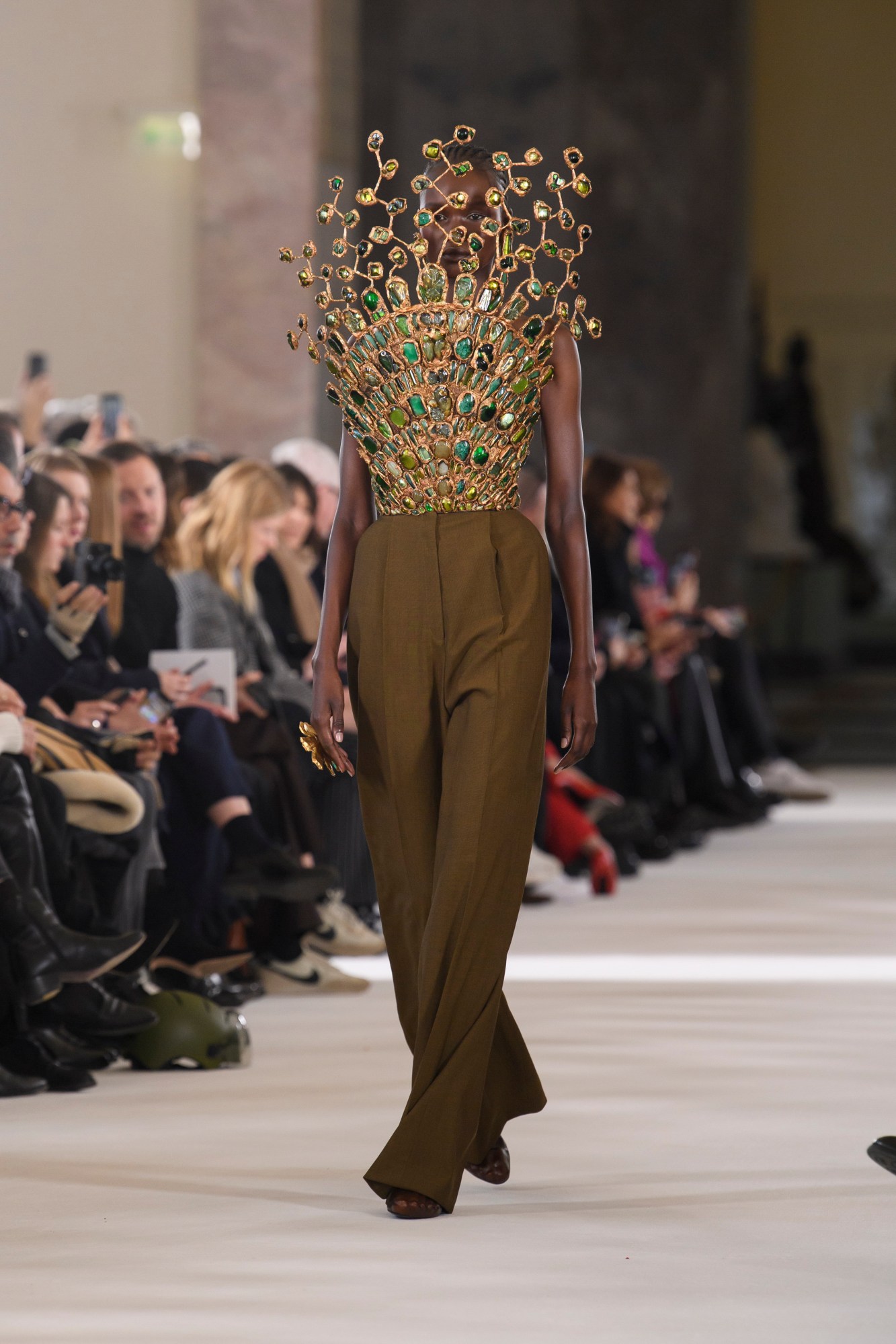
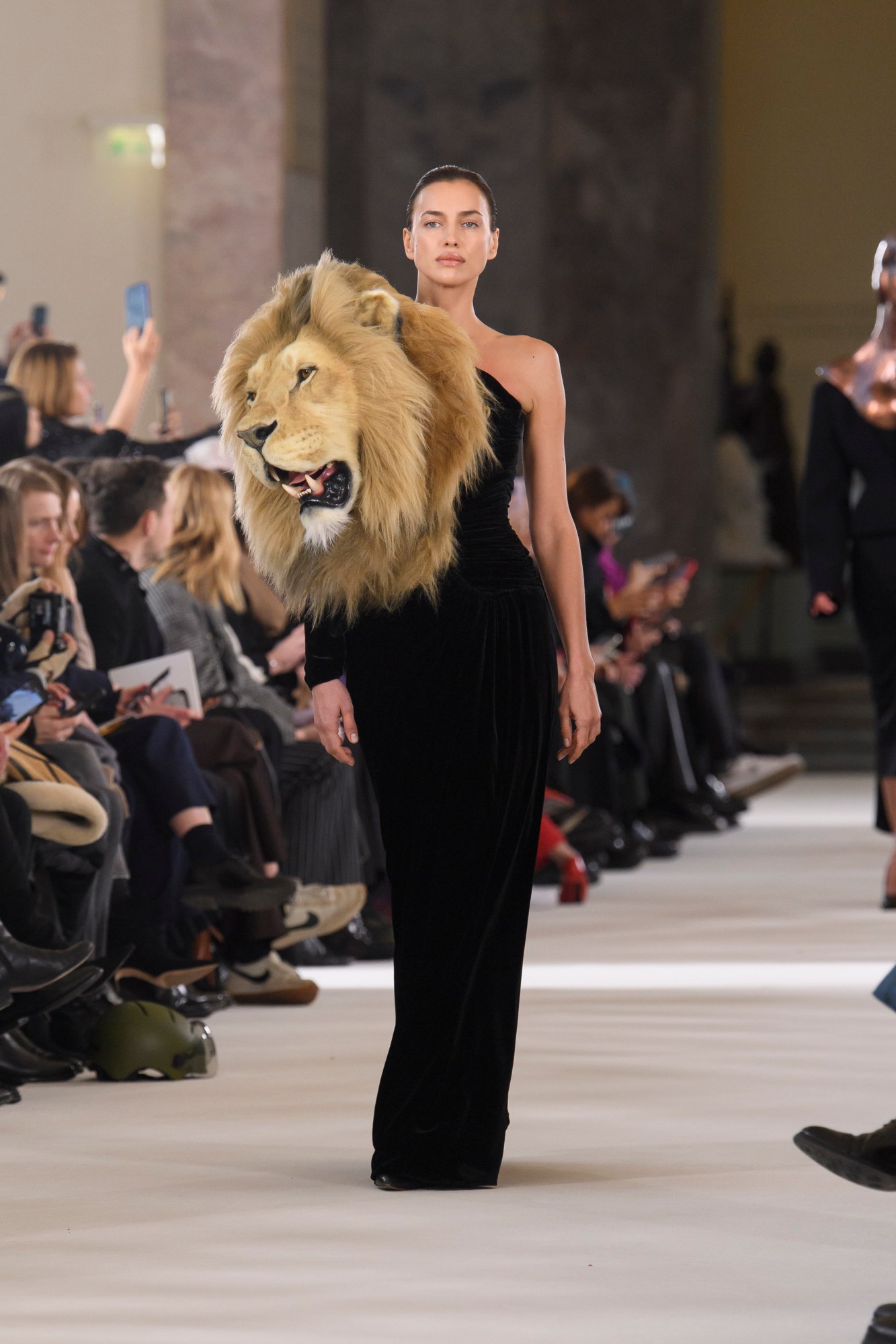
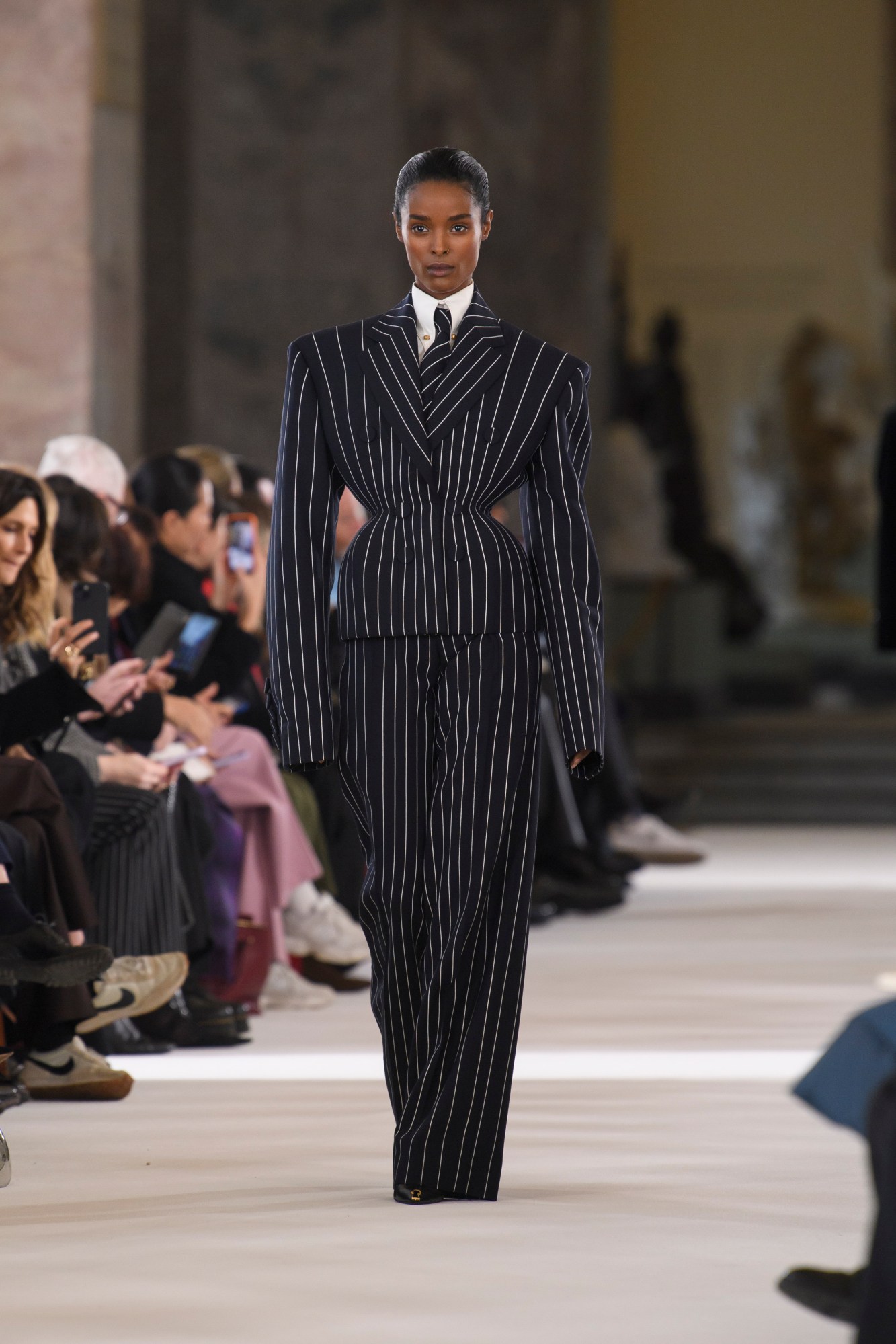
Schiaparelli
Way back when, a generation of spunky young designers took over some of the world’s most fabled couture houses and caused quite a stir. They saw it as a platform for experimentation, an art form that could be just as provocative as contemporary art or rock ‘n’ roll. Well, you’ll be glad to know, couture still has the ability to provoke, even outrage, as Schiaparelli’s creative director Daniel Roseberry discovered when he innocently sent out supermodels in “faux taxidermy” that was so expertly hand-sculpted in foam and resin, and embroidered with faux fur and other synthetics, that it caused people to think it was the real thing. Now, without wading into debates about hyperrealism or the postcolonial weight of the imagery, it should be said that sitting there at the show, it was very clear that these were ersatz copies of animals. In his show notes, Daniel explained that he had recently re-read Dante Alighieri’s The Divine Comedy and the trio of hyperreal animal looks — Shalom Harlow’s strapless sheath moulded into the form of a spotted leopard with its teeth bared, Irina Shayk’s one-shouldered black velvet dress with a roaring lion’s head (also seen on Kylie Jenner in the FROW), and Naomi Campbell in a shaggy coat with a bear’s face on its shoulder — were representative of the three symbolic animals of Dante’s Inferno (each of which represented lust, pride, and avarice, respectively).
Hyperrealism aside, it is surrealism — the art form of things not appearing as they seem — that is one of the defining characteristics at Schiaparelli. Daniel is constantly pushing the parameters of what surrealism can look like in 2023. Like Netflix’s Emily, he also loves Disney films, French fries and literal, worn-on-your-sleeve sartorial gestures — and he is not afraid of making big statements. His is the kind of bombastic blockbuster couture that celebrities wear to stand out on red carpets, and though not many can afford it, millions can appreciate its artistry from just a glance at the bright gilt details and cartoonish silhouettes. Case in point: Kylie Jenner in her black column gown (lion’s head and all) and Doja Cat in her red-satin she-devil gown, body and face entirely covered in blood-red crystals. Both were sat in the audience of the show and became instantly meme-worthy talking points in Twitter threads, WhatsApp groups and coffee mornings around the world.
This time, however, there was less of the usual black-and-gold trompe l’oeil and more abstract takes on artifice and surrealism. Long, sinuous velvet column dresses were hand-painted for an iridescent finish, resulting in a pigment that changes colour depending on your perspective. Hyperbolised hourglass silhouettes, partly inspired by the house’s historic Shocking! perfume bottle, added to the caricaturistic nature of Daniel’s silhouettes, which this time include slim trouser suits and tuxedos that artfully exaggerated pinstripes and menswear silhouettes. Elsewhere, there were incredible examples of workmanship on long sheath dresses with flamboyant bustiers: one with plastrons sculpted in waves of mother-of-pearl, another in lemon tree marquetry, one fluttering with row-upon-row of tiny pieces of leather-wrapped tin, and one breathtaking explosion of copper, patinaed by hand over the course of four months. Back on the subject of Dante, Daniel was struck by the book’s recurring themes of doubt in the creative process, and a designer’s duty to take risks. “Fear means you’re pushing yourself to make something shocking, something new,” he wrote in his show notes. Words that couldn’t be more prescient, given the response to his collection.
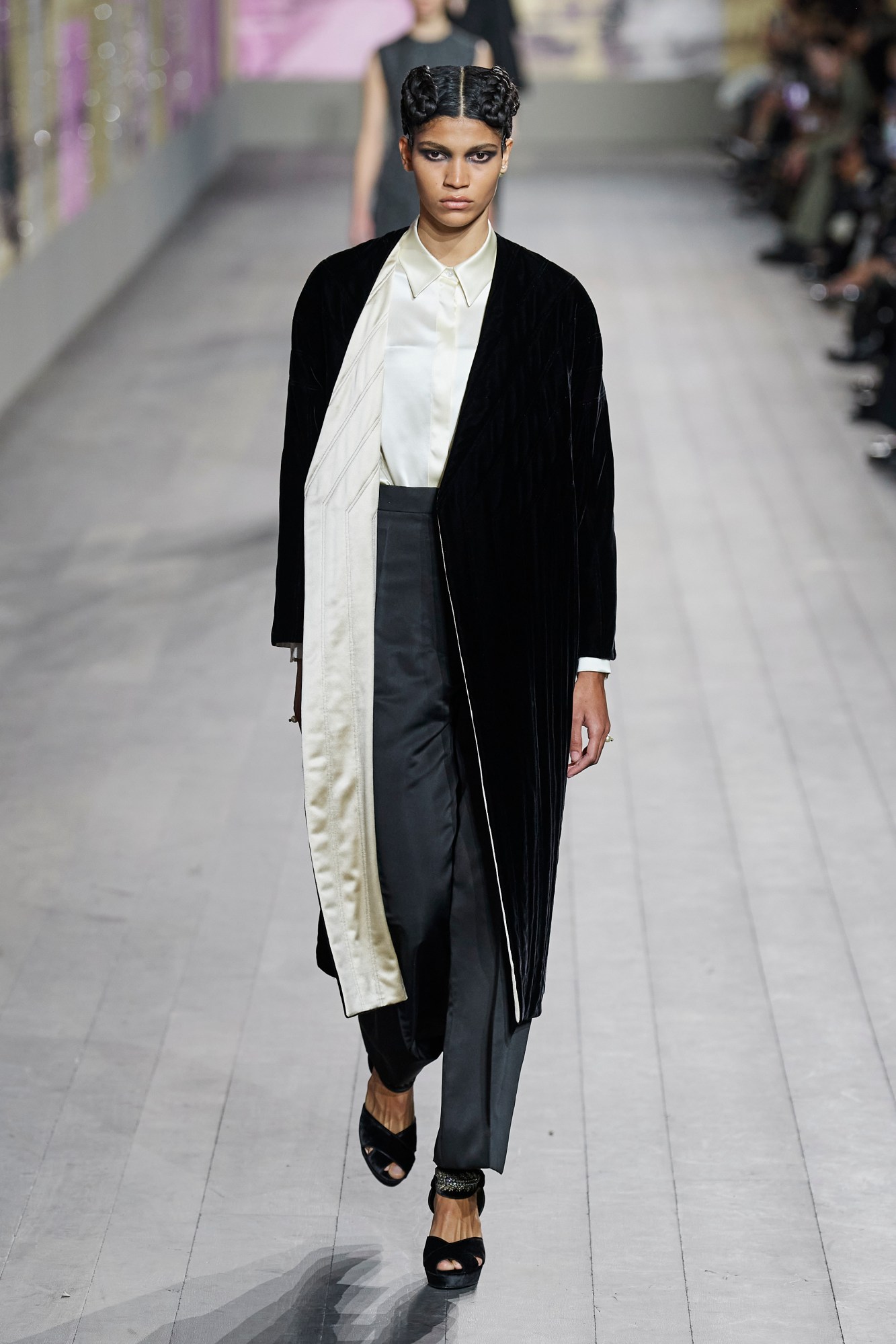

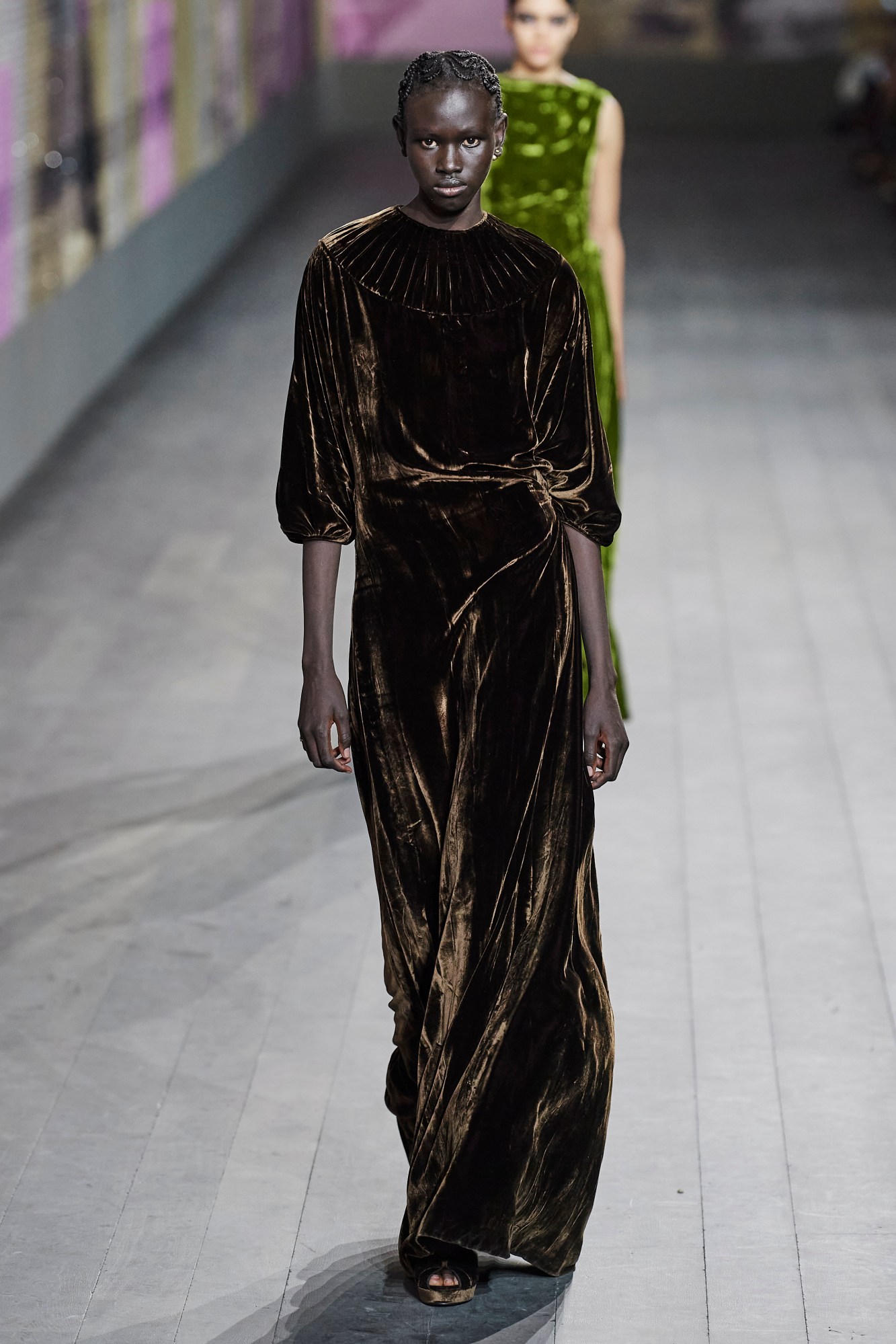
Dior
For her latest Dior couture show, Maria Grazia Chiuri looked to Josephine Baker as her muse. There were a number of reasons for the timely reference. Firstly, the American-born performer was pantheonised as a national hero by the French government in 2021, largely for her role in the French Resistance, but also as a performer and cultural icon. She is the first woman of colour to be recognised as such. It also happens that Maria Grazia had been discussing a collaboration with contemporary artist Mickalene Thomas, whose work has often explored Josephine’s legacy since Mickalene’s days as an art student. Maria Grazia invited her to create a wraparound artwork for the show’s set, a modern-day pantheon of Black women through the ages in pink-and-yellow portraits entirely embroidered in sequins by the Chanakya School of Craft in India. But really, the show’s theme all came together because of the young starlet Yara Shahidi. Last year, when Dior was asked to dress her for the Met Gala, Yara insisted on a recreation of a Dior gown that Josephine wore for a performance in New York in 1951. It led Maria Grazia and her team down a rabbit hole of forensically digging up Josephine’s history as a client of the house, and deciding that “she belongs at the centre of the history of Dior”, as Maria Grazia put it. Essentially, it was about giving Josephine her flowers.
It helped that the star had a wardrobe of couture to draw from, much of which she’d bought at Dior. “She understood immediately the power of fashion and how it can help to break the rules,” Maria Grazia explained in a preview. “She started with a cabaret in Paris that was a very specific representation of Black women in Europe, and after her life and clothes were changing to have more authority and agency. The clothes helped break down some walls.”
So, Maria Grazia’s collection offered an antidote to the heavily fetishised image of Josephine’s infamous Folies Bergère costume – a string of bananas and little else – which came to define Baker’s image. Although there were a few beaded fringed dresses, swaying with twinkly movement — MGC was instead focusing on Josephine’s multitudes, more than just a cabaret cliché. She discovered that Josephine often wore men’s tailoring, like Marlene Dietrich, although is less credited with breaking down gender barriers — hence the sombre black tailoring and satin-lapelled coats. During her active work in the Civil Rights movement, Josephine often wore her military uniform and grey Dior tailleur as a point of pride, which perhaps informed the double-breasted grey bar suits. Crushed velvets and creased satins implied a sense of dancer’s movement, while satin gowns worn over deconstructed corsetry and lingerie, hinted at the private moments a performer has in her dressing room. A feathered ruff here, a shimmering lamé gown there, and the occasional couture-grade mesh transparency hinted at the extroversion of Josephine’s onstage persona. No tribute to her would be complete without a razzle of jazz hands after all.

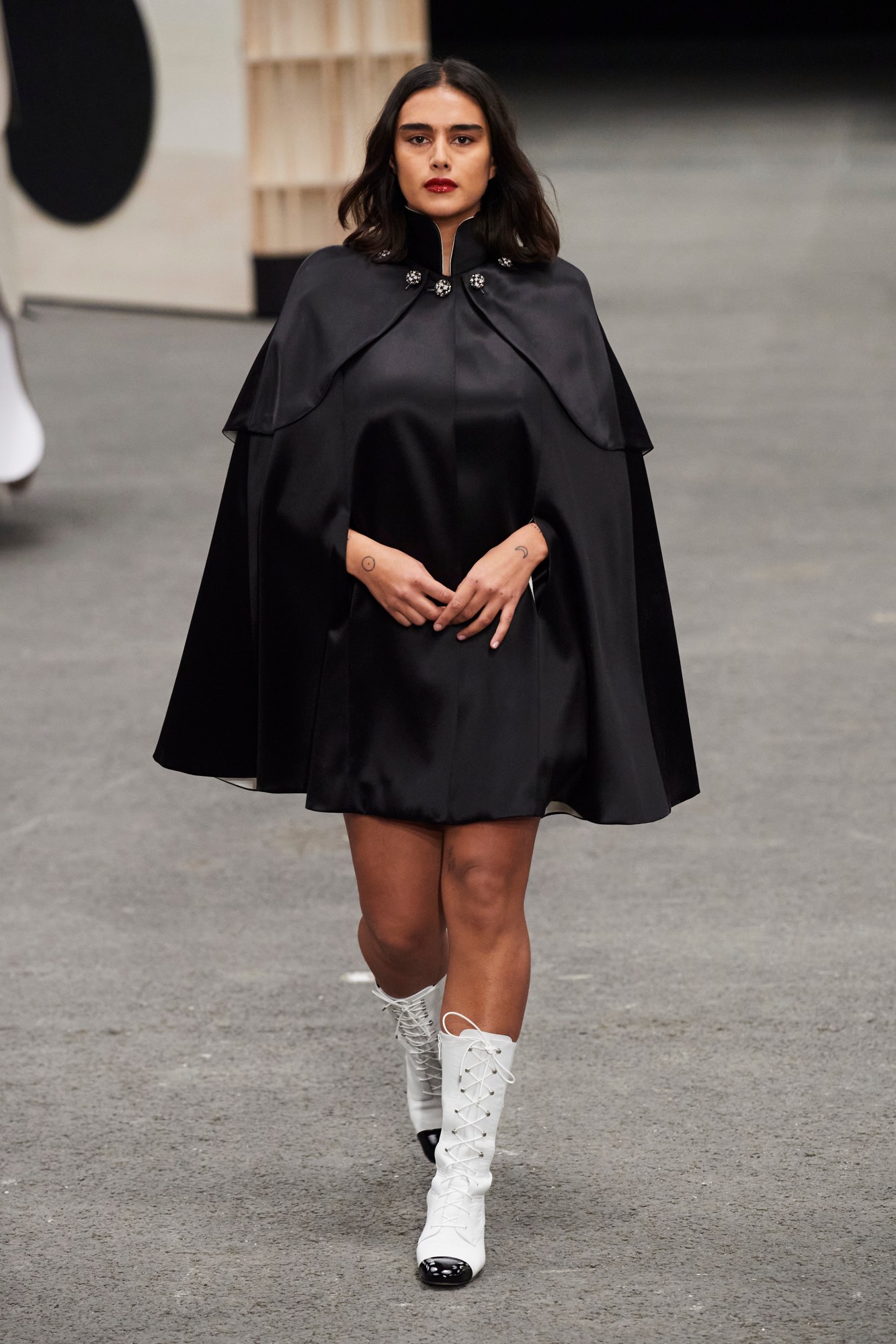

Chanel
It says a lot that Chanel, the fashion house once known for the most outrageously extravagant show sets (A real-life iceberg! A Chanel-ified supermarket!) showed its latest couture show in what could have been an ordinary school sports hall. The concrete floors of the venue were left bare, while guests perched their tweed-clad bottoms on plastic chairs in ordinary bleachers. Was this some kind of intentional message about couture in the age of the Cost of Living Crisis? When the show started, out came giant cardboard and plywood sculptures of a lion, crocodile and an elephant designed by French installation artist Xavier Veilhan, out of which models emerged Trojan horse-style. The installation was a result of a conversation between Xavier and Chanel’s artistic director Virginie Viard, who have collaborated twice before on playful sets for the designer’s shows. When they sat down for a tête-à-tête in Coco Chanel’s Rue Cambon apartment, they noticed the statue of a camel on a table, large bronzes of deer around the fireplace, and lion effigies (Coco was a proud Leo). The idea was to blow them up into big childlike toys, something to spark a naïve sense of joy. Couture is ultimately about playing dress-up, after all.
However, what was more noticeable, were the humble materials of the sculptures, in comparison to that which was belied within them: a collection that took its cue from the female uniforms of parades and spectacles. Models emerged in bow ties and top hats, Mod-ish tweed suits with ra-ra skirts and boxy shorts, ringmaster satin capes, tailed tuxedo jackets, petticoats, majorette coat dresses. Many of these looks came subtly embellished with even more animals too: kittens, corgis, rabbits, swallows and does. Showmanship was clearly the theme of the collection, even if Virginie is no ostentatious ringmaster. Instead, she put forward a sense of simplicity with neatly abbreviated Chanel tweeds, and a straightforward romancing of the long, lace dresses. Directness was the order of the day, no circus tricks or illusions to be found. And in that sense, each piece echoed the pared-back style of Gabrielle ‘Coco’ Chanel herself, the woman who told the world to take off the last thing they put on, that elegance is refusal. After all, designers aren’t circus freaks — sometimes to-the-point clothes are far better than performative gestures.
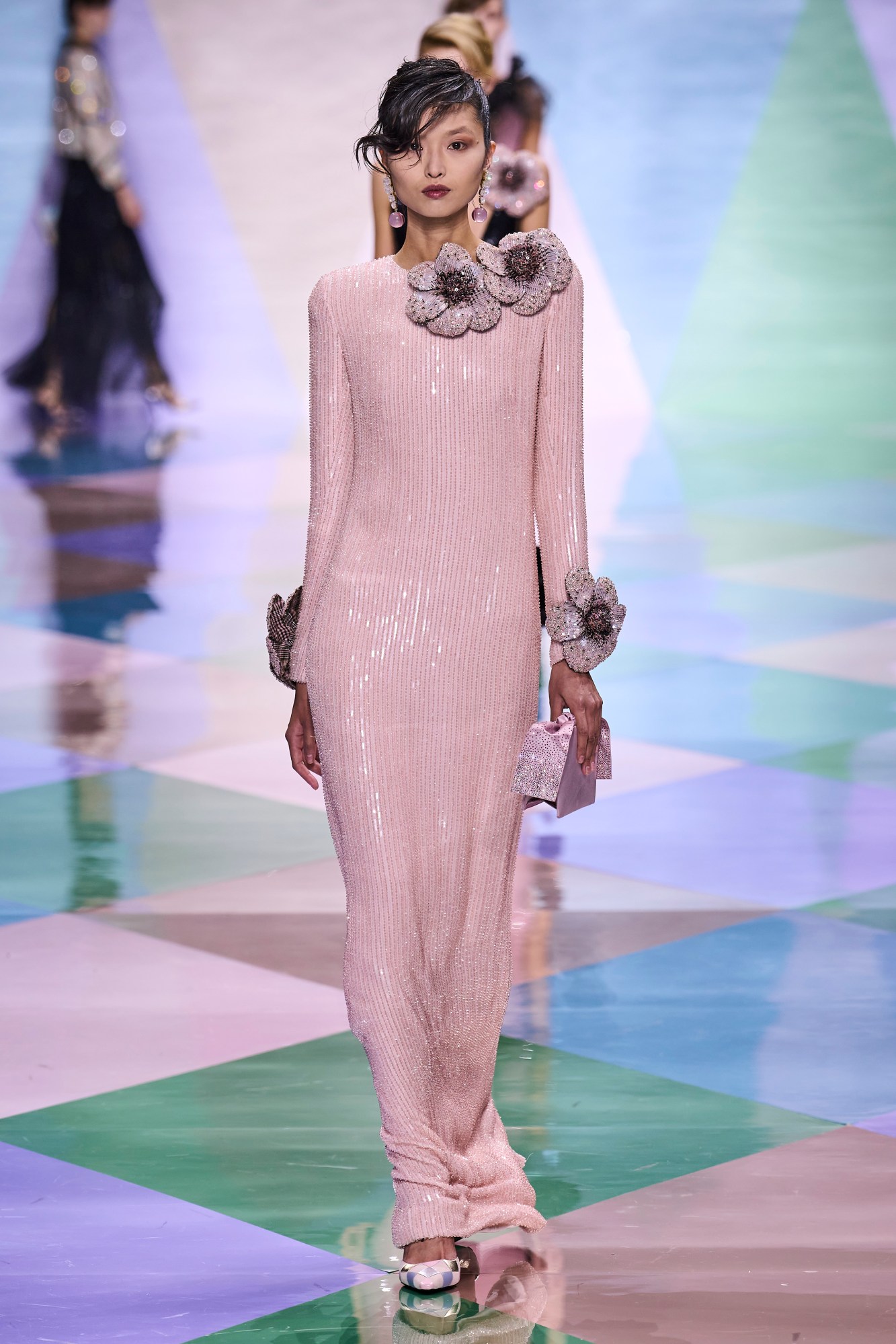

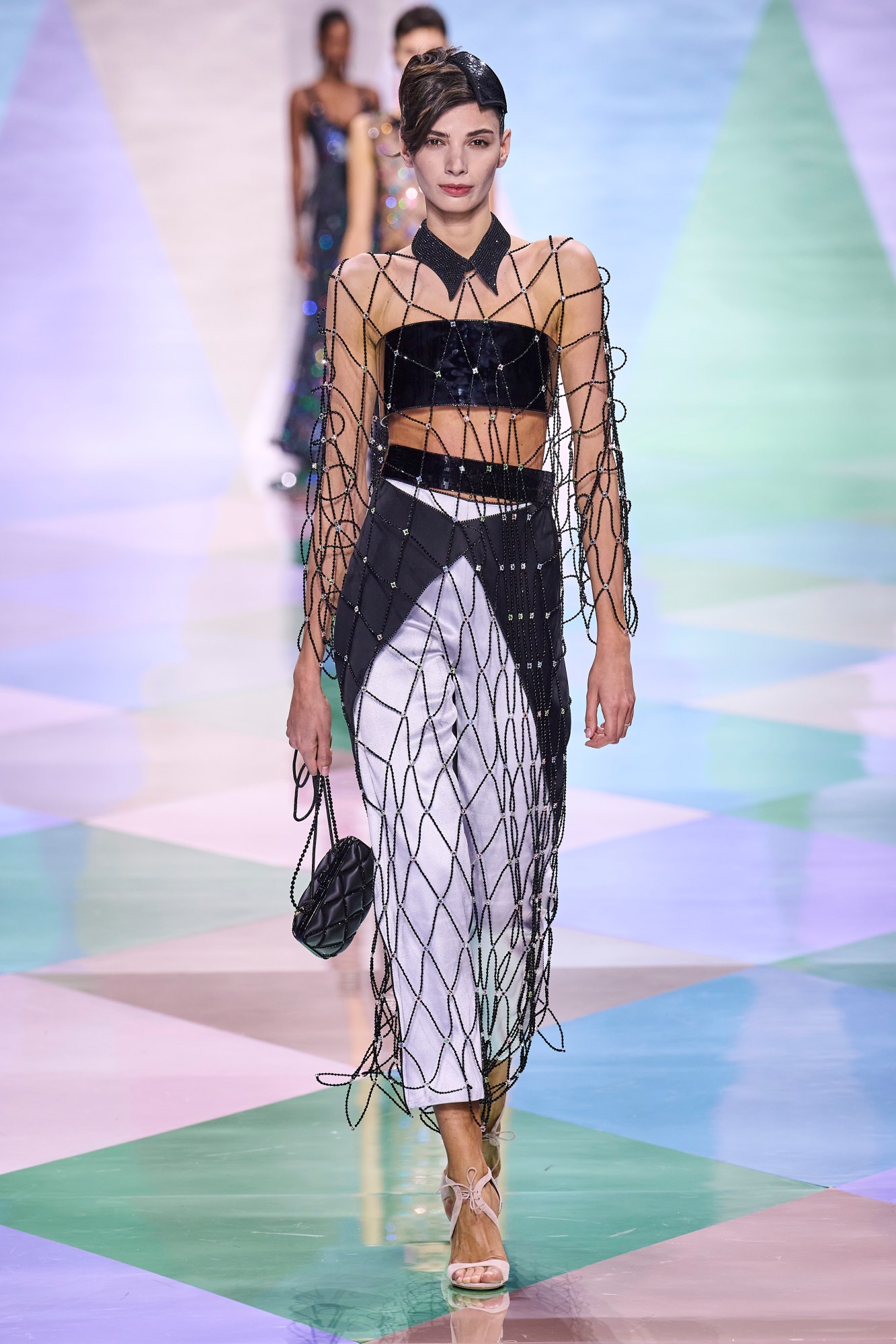
Armani Privé
In the audience of the Armani Privé show was not one, but a handful of actors and Hollywood types who had received news that morning of an Oscar nomination. All eyes were on Michelle Yeoh as she watched the show, every lingering glance a cryptic clue for bets on what she might wear to the awards ceremony. Why do actresses love Armani? Well, just ask Juliette Binoche, who was also there, who once played herself in Call My Agent, in complete despair over the ridiculous outfit her stylist had put her in for the Cannes Film Festival. What does she change into as a failsafe option? Armani.
You can see why. In the realm of haute couture, Giorgo Armani is an éminence grise, an old hand at the very traditional form of haute couture. He is one of the last remaining designers to pick a theme for a collection and stick to it, exploring a singular narrative in myriad ways. This season, it was the harlequin check — you know, the rhomboid motif associated with everything from carnivals to pierrot. He riffed on it with long, lean trousers and suits with nipped-in jackets, many of which sparkled in sugar-almond hues. There were long, lean gowns, too — plenty of them. Michelle Yeoh couldn’t take her eyes off one in particular but I guess you’ll have to wait till the Oscars to find out which one.
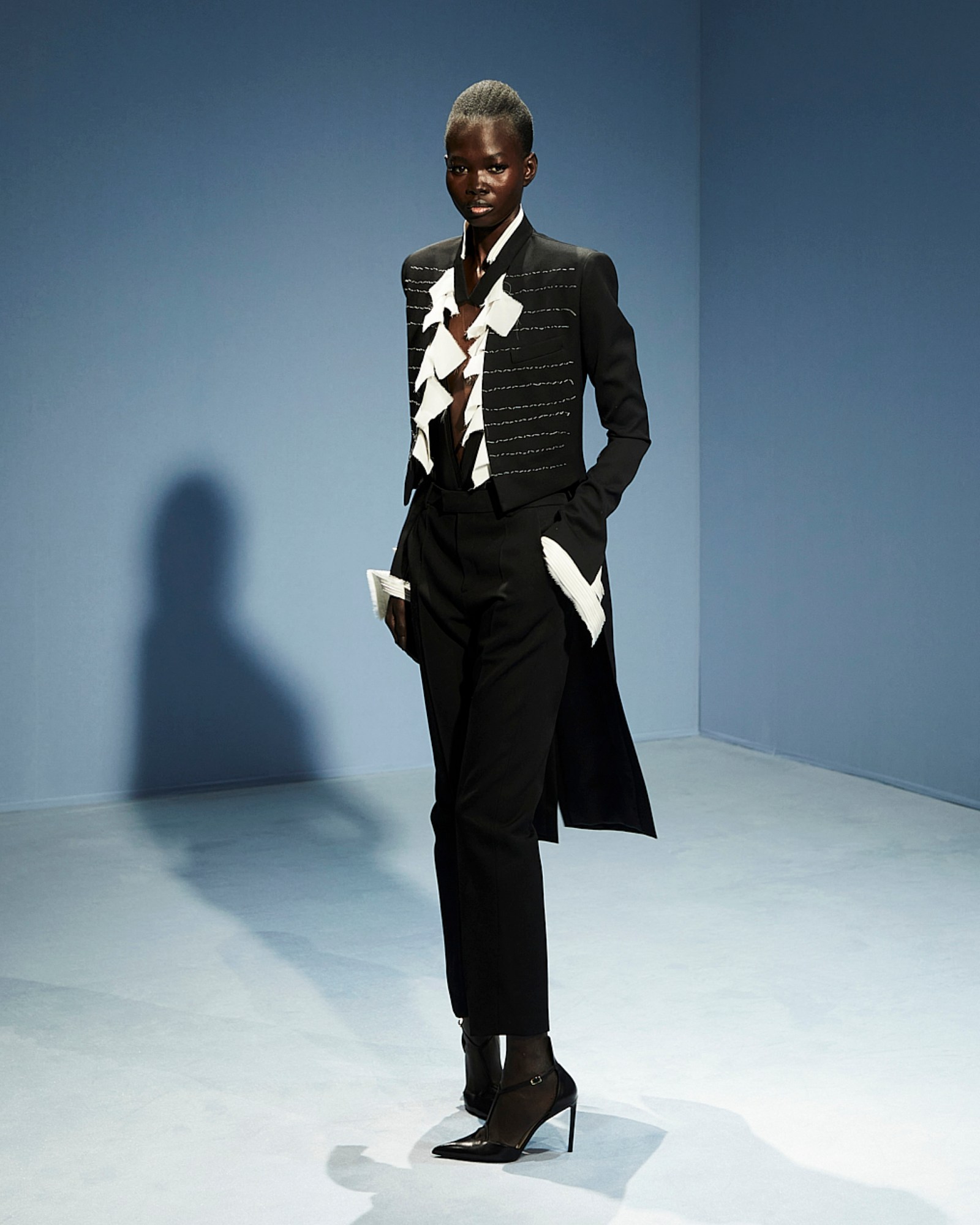
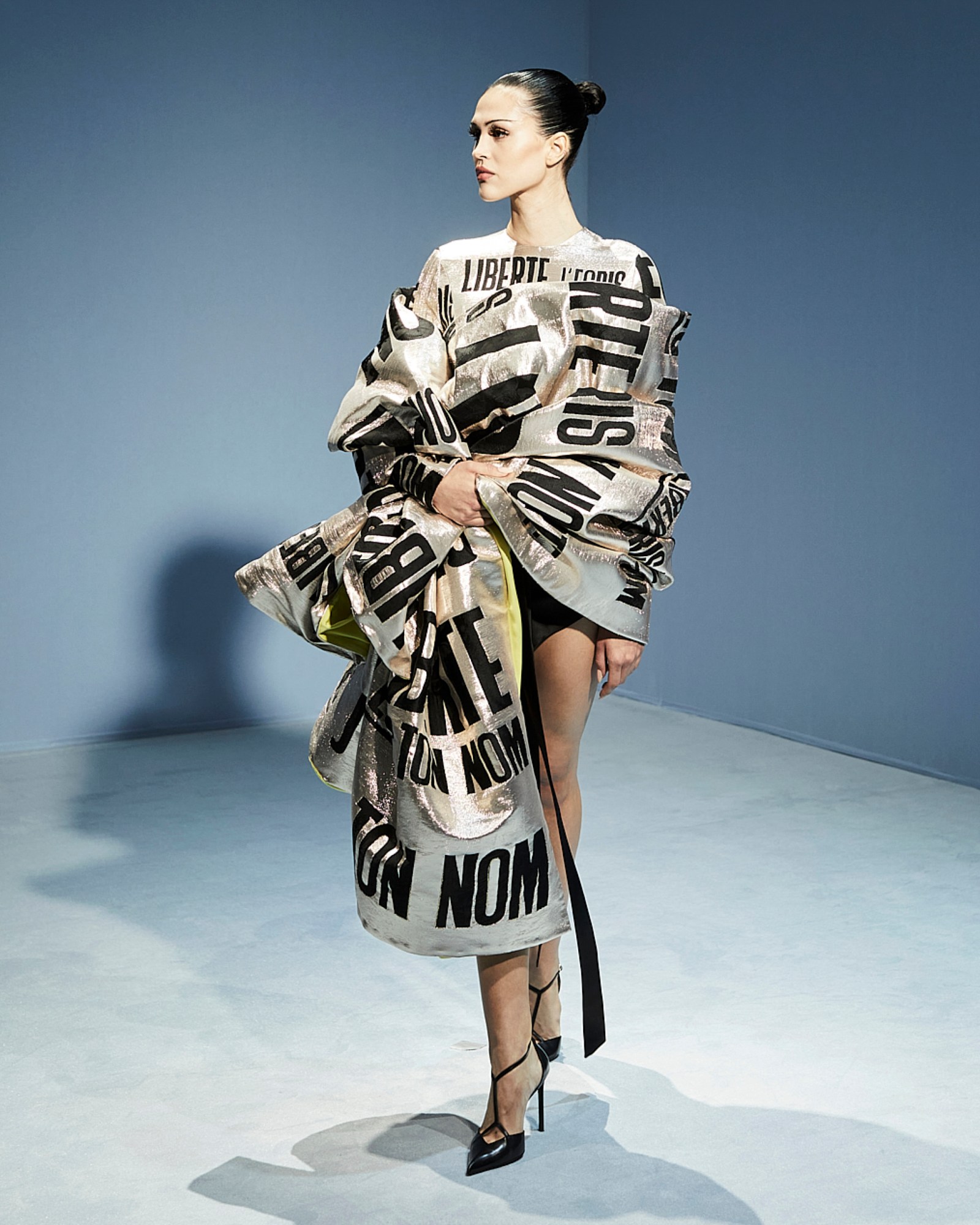
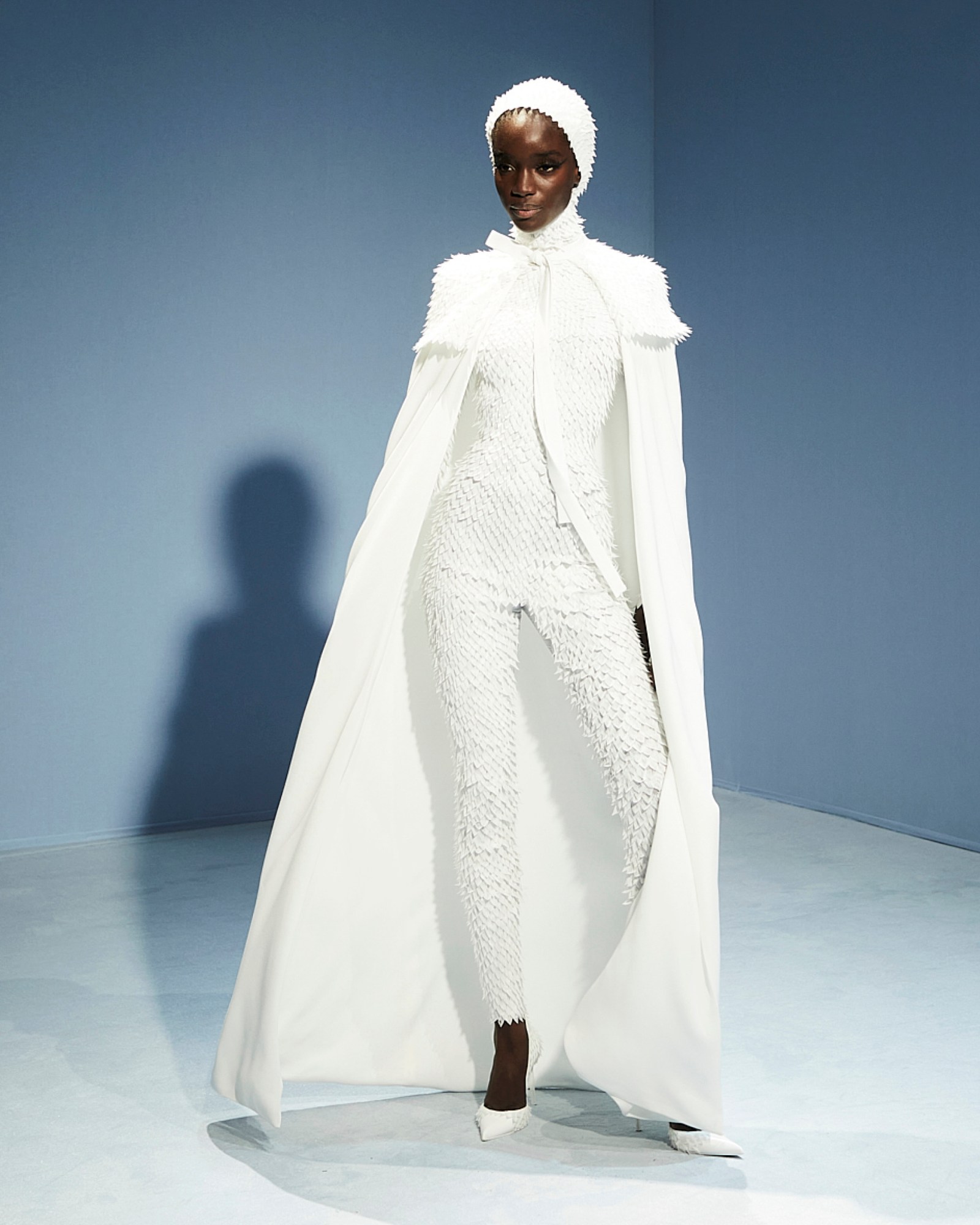
Jean Paul Gaultier
Sometimes, there’s a moment that restores your faith in fashion, and oftentimes they happen in the realm of haute couture. This season, it was Haider Ackermann’s one-off collection for Jean Paul Gaultier. Seriously sharp and concise, it was couture at its best – crisp and not a stitch out of place, big on sculptural silhouettes, theatrical without being gimmicky, sensual and serious while also extolling the joys of dressing up. It was a collection that felt like an homage to the great couturiers of the 20th century — Cristobal Balenciaga, Madame Grès, Thierry Mugler, and of course, Jean Paul Gaultier — from a designer who is now the fourth to be invited by the latter to interpret the Gaultier legacy. And while they may not have much in common at first, there is a sense of construction and deconstruction to both Gaultier and Ackermann’s respective work, and it all came to life magnificently in this show.
The emphasis was on tailoring. Pin-sharp military jackets, incredibly textured coats and long cocoon capes were all worn with sculpted cigarette trousers. The show opened with a tailed military jacket, with what looked like marquetry frogging and visible stitching to show the inner workings of les petites mains. What followed was tailoring with thorny plumes exploding from beneath the lapels and Gaultier’s signature corsetry stripped back to tropical colour-blocked bandeaus. Models walked with a feline prowl along the sky-blue carpet, imperious to the audience, stopping and swirling as though posing for Irving Penn. On the soundtrack, heavy breathing and slow music set the delightfully tortoise-like pace. There were gowns that sculpted pleats into Delphic volumes, a coat dress with contrasting lime and turquoise satin linings sensually exposed through the backless cut, a super-chic black blouson and pants, as well as a shimmering gold men’s coat that comprised of thousands of pins as though they were strands of fur. More tuxedos, spliced across the chest. More diaphanous trails of chiffon and sparing splays of feathers. More serpentine gowns with complex Möbius strips writhing around the body.
It was a testament to Haider’s skill and talent as a designer that he was able to excite and engage an audience — and the Internet, it seems — with just a simple format of showing fantastic clothes. Sometimes, with all the distractions and big-budget production, it can be easy to forget that couture is ultimately about dressmaking. It also makes you wonder why he isn’t a creative director at a couture house, because he clearly knows what he’s doing. The show was a sight to behold, a reminder of just how much couture can make one dream, and how vital it is in the contemporary fashion landscape. The world may be changing but, as Haider showed, couture still has the power to make us dream. At its best, as it was here, couture is pure magic.
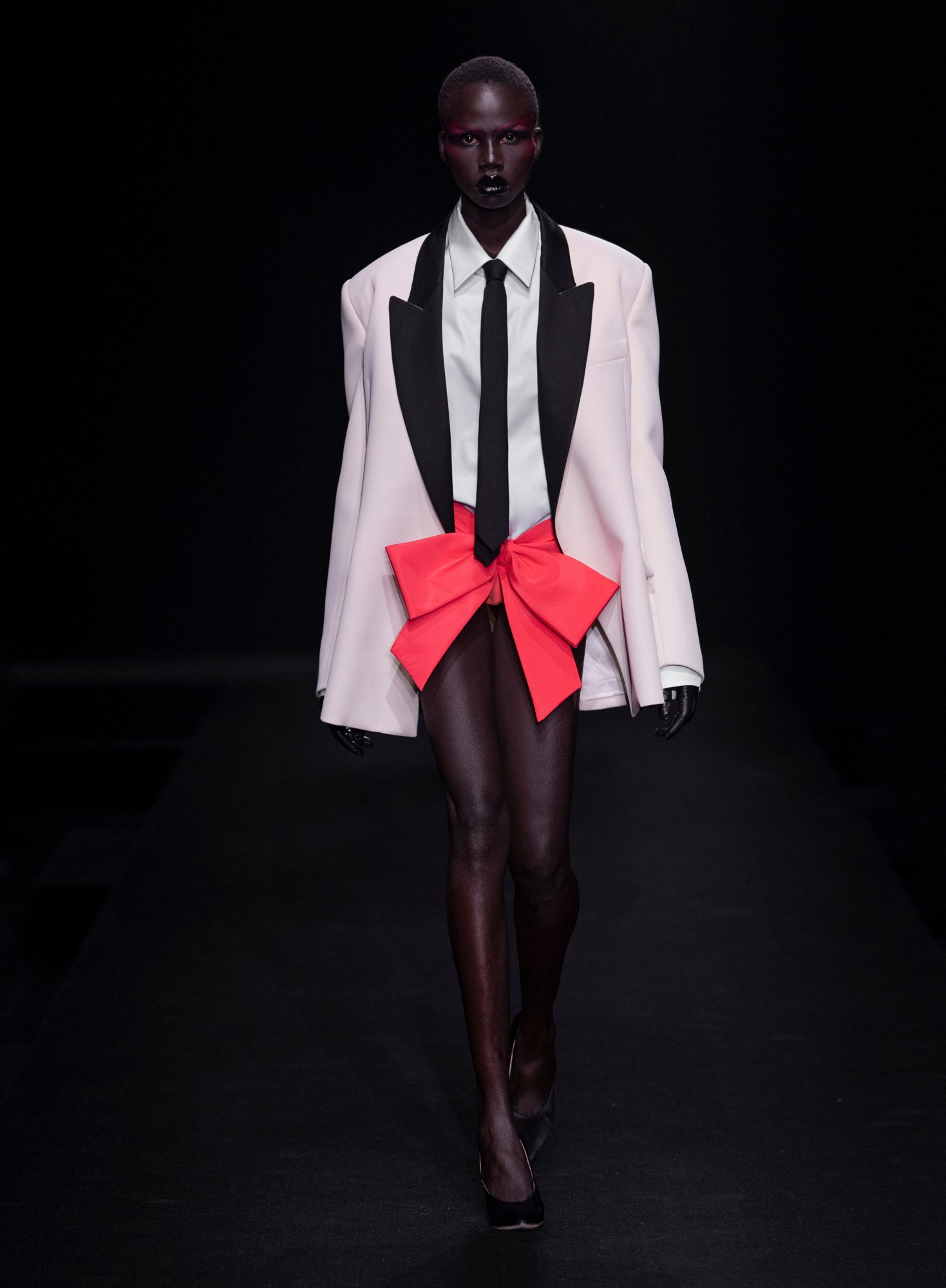
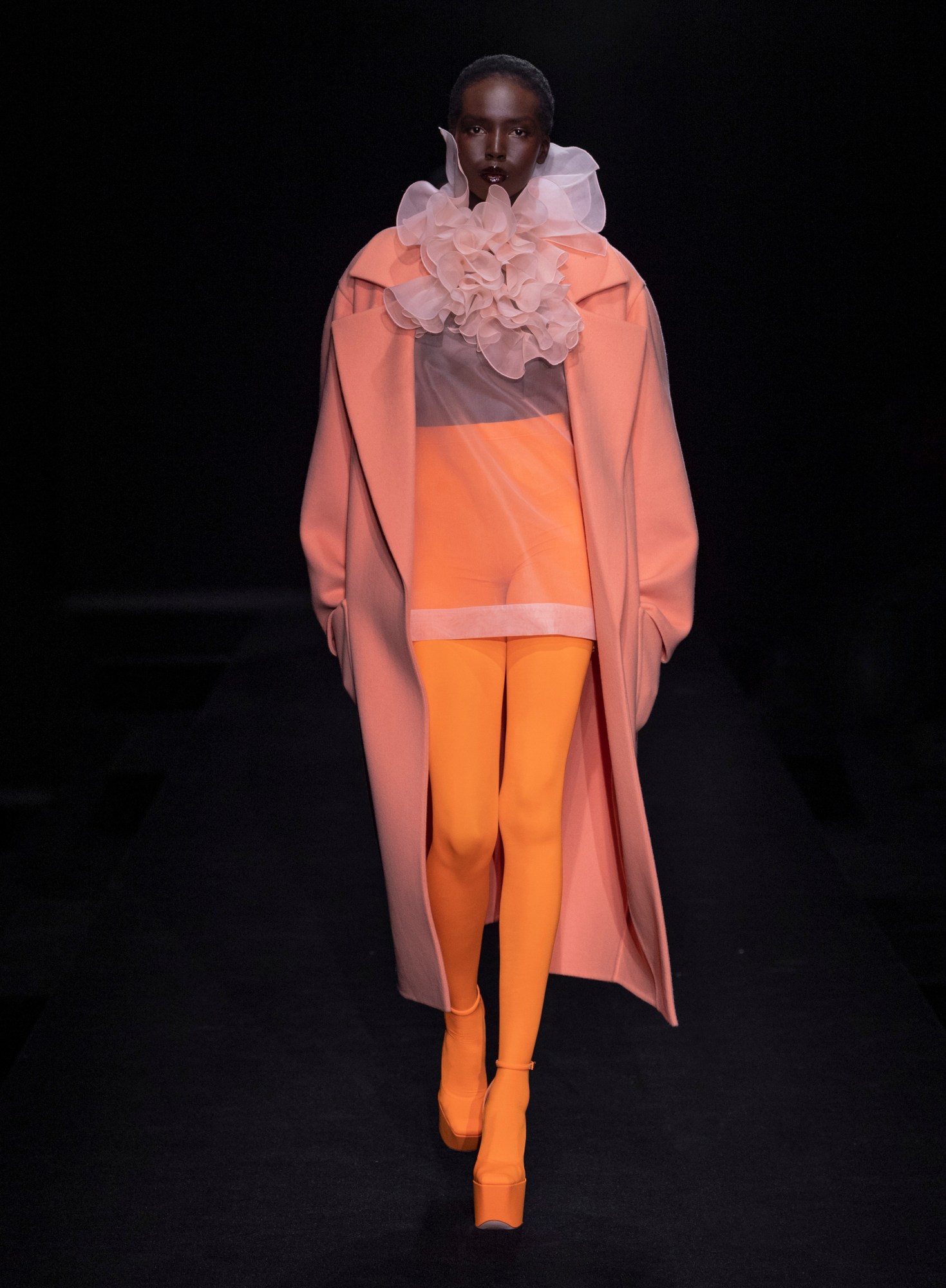

Valentino
Though the world of heavily made-up Club Kids might seem like a universe away from the couture-clad ladies on super-yachts and in gilded Louis XV salons, they actually have more in common than you might think. According to Valentino’s Pierpaolo Piccioli, there is a shared understanding of clothes as a transformative tool of self-invention. “A heroic expression of inner truth made outer … the opportunity to become,” as the show notes said. “Mutual gestures of extravagance, the notion of clothes as tools of transformation, crafting a true self, a dichotomous yet dual vocabulary of display and revelation, performance through life.” Which is all to say that Pierpaolo called his latest collection Valentino Le Club Couture, and — you guessed it — it was a couture makeover of the grit-and-glitter looks of London’s Blitz Kids and New Romantics (to find out more about them, listen to our podcast!) who blurred gender, social distinctions, and sartorial genres in the 80s like no other group of nightowls.
However, this being the work of Pierpaolo — a designer known for operatic arias of colour, volume and grandeur — the sweaty-dancefloor spirit of those Club Kids was polished up and elevated to high heavens. Whereas once, his couture was once earmarked by poised grandeur and stateliness, it says a lot about his confidence and comfort at Valentino that he could shake things up with a tougher, younger take on couture. For a start, the show was one of the few co-ed shows during the week. Just as much space was dedicated for boys in beautiful menswear — colourful suits, sparkly coats and ruffled chiffon blouses — as for its typically brazen womenswear.
The collection was perhaps Valentino’s largest couture offering to date: 89 individual looks. Sprouse-bright neon leggings and opera gloves were accents to incendiary mini skirts, satin leotards, peekaboo transparencies, bare breasts, and plunging necklines in a rainbow of hues. Of course, there were beautiful ruffled satin gowns — a bit more Princess Di than Princess Julia — as well as plenty of dancing-on-the-lip-of-the-volcano polka dots, striped silks, giant bows and puffball volumes that seemed to nod to the work of Christian Lacroix, and of course, the original Mr Valentino. Put simply, there was something for everyone. The question is, though, who will dare wear it to the club?



Fendi
Kim Jones’ latest Fendi couture collection was all about lightness, presented in a white oval-shaped space that lit up with a stark-white strobe light as the show began. Were we in a spaceship, or a faraway galaxy? The collection that came out, on alien-like models, seemed to suggest something of both the past and the future. This was not space, but the Elysian fields of haute couture, where clothes can seem like they have descended from another stratosphere. The concept of the show may have been simple — a collection of 1930s-esque slip dresses and bias-cut gowns — but the execution was anything but. Drawing on the arsenal of one-of-a-kind couture techniques, Kim unlocked the traditions and secrets of Fendi’s couture ateliers to create futuristic textures and innovative materials that almost looked sci-fi. His show notes aptly summed up the collection as an “inner-world palimpsest, where iterations, transparencies and techniques of the past go to make up the present and move subtly into the future.”
The result was a predominantly ankle-skimming collection of dresses, which started off in silvery textures — some were made from leather overlaid with digitally-printed lace, others with knits transforming into chainmail, or metal-embellished cashmere coats casually draped over shoulders. There were chainmail opera gloves, and furry stoles engineered from iridescent feather-like textures. Extraordinarily delicate Japanese mohair (also known as fuuga, the finest gauge to be found in the world) was worked into a gossamer crochet that was so ornate it looked like it could be as light as a cobweb. Each and every look had an element of something extraordinary — and yes, they may have all been gowns, but Kim Jones knows his customer; they’re coming to Fendi for once-in-a-lifetime glamour, not for heavy daywear. It was definitely the most accomplished and cohesive couture collection that the British designer has shown so far — totally otherworldly, just as couture should be.
